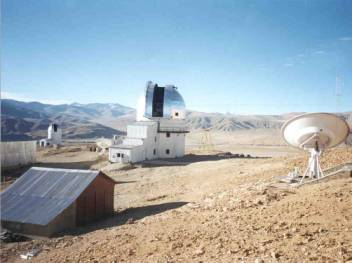The brightness of BL Lacertae (BL Lac), a blazar located about 950 million light years from the Earth and discovered almost a century ago has been found to have reached its maxima.
Results published in the latest study, led by post-doctoral fellow Aditi Agarwal from the Raman Research Institute, an autonomous institute funded by the Department of Science and Technology (DST), stated that the flare emanated from BL Lac had reached the maxima on August 21, 2020, which is a novel finding about this source.
For several decades now, BL Lacertae (commonly referred as BL Lac), an Active Galactic Nucleus (AGN) source, has remained of significant interest for study among the global astronomy community.
Usually located in the core of the galaxy, AGNs are compact structures showing anomalous luminosity from time-to-time. The deviation in their brightness levels can vary and last either for a few hours, days, weeks or even some months. This luminosity variance, when seen with naked human eye, is nothing but the electromagnetic emissions that are visible across the radio, microwave, infrared, optical, ultra-violet, X-ray and gamma wavelengths.
The flaring up and its decay of the emissions from BL Lac was detected using the continuous observations made by an ensemble of eleven optical telescopes located in across the world. One among them was the Himalayan Chandra Telescope located in Ladakh’s Hanle.
In early July 2020, astronomers suspected that BL Lac was beginning to flare up. All the eleven telescopes were instantly deployed and focused observations continued for 84 days starting July 13, 2020 till – September 14, 2020.
“As time progressed, it was observed that the flare was becoming brighter gradually, indicating that BL Lac was turning more active. For the first time on August 21, 2020, BL Lac’s brightness reached its maxima. This was captured well by the Modified Dall–Kirkham telescope located in Kraków, Poland,” said Agarwal, lead author of the paper titled ‘Analysis of the intra-night variability of BL Lacertae during its August 2020 flare’ published in the Astrophysical Journal Supplements Series.
Results showed that BL Lac’s magnitude (brightness) increased from 14 to 11.8 (astronomically used) whereas its flux value rose from 13.37 milli Jansky (mJy) to peak at 109.88 mJy, another maiden observation for this source. Additionally, this international collaboration of researchers calculated the source’s magnetic field, which was found to range from 7.5 Gauss to 76.3 Gauss during the flare.

These significant calculations, never possible before, was solely performed because of the availability of Terabytes of datasets obtained from the battery of telescopes.
“These new parameters shall form the basis for future multispectral studies of BL Lac,” Agarwal highlighted.
Furthermore, the researchers were also able to estimate the flare emitting region size of this source, which was calculated to be 1/8th on the actual jet radius.
Agarwal’s team continues to carry on with more observations of this BL Lac and attempt to understand its characteristics in the X-Ray and gamma wavelengths are currently underway.
Link of the paper - https://arxiv.org/abs/2302.10177






























